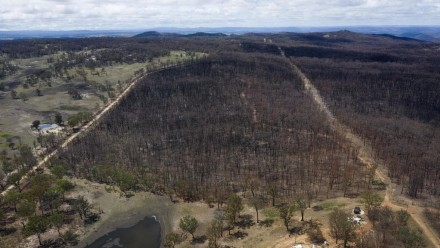Hi-tech bushfire detection gadgets trialled this Australian summer
The greater use of drones, ground sensors, satellites and aerial water bombing to quickly detect and fight bushfires could save the Australian economy $8.2 billion over the next three decades, according to Australian National University research.
Bushfires threaten to cost the Australian economy up to $1.1 billion per year between 2020 and 2049, ANU co-author Professor Matthew Gray said.
Identifying bushfires as soon as possible — within 30-60 minutes of ignition — helps dictate the scale and threat of major fires, chances for containment and the economic impact.
The ANU Bushfire Initiative’s Dr Marta Yebra is leading an ambitious long-term project to build satellite capacity to automatically identify bushfires within 60 seconds of ignition, with the hope of extinguishing accessible fires within five minutes.
This fire season, a trial in the ACT will see smoke and heat ground sensors, elevated cameras and high altitude balloons deployed to quickly identify fires — in concert with satellite imagery from NASA and Japan.











